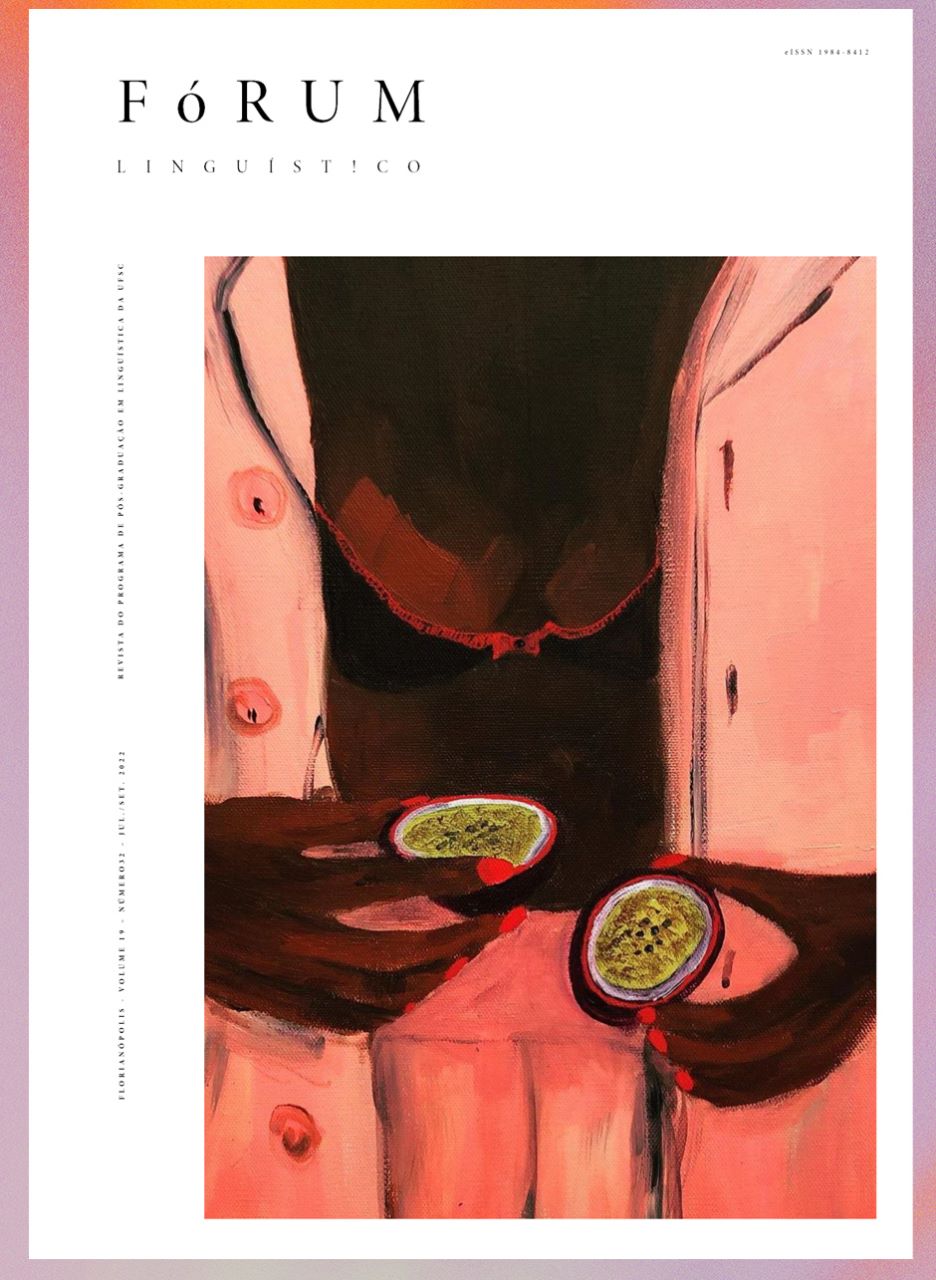What are the choices behind the titles? A Systemic Functional Grammar analysis of titles from articles of Rural Sciences and Communication
DOI:
https://doi.org/10.5007/1984-8412.2022.e79856Abstract
Selecting a text to read through its title is a current habit. In the scientific context, Swales and Feak (1998) explained that interesting titles attract readers and function as a way of convincing them to go forward. Previous studies usually present a quantitative approach. This research aims at identifying similarities and differences between titles of articles from Rural Sciences and Communication and providing an interpretation guided by Halliday and Matthiessen’s (2014) Systemic Functional Grammar. To do so, 246 titles were retrieved from the European Journal of Agronomy and the International Journal of Communication. Subsequently, an analysis of 30% of titles was conducted, considering the number of words, verbs, punctuation (HARTLEY, 2005), and field. The analysis suggests that titles are short, direct, and informative; choices for punctuation point to simple sentences, and the format short:long. The verbs were classified mainly as material processes, which may inform that concrete changes led to the article's findings.
References
CAPES – Coordenação de Aperfeiçoamento de Pessoal de Nível Superior. Plataforma Sucupira. Brasília, DF: CAPES, c.2020. Available at: https://sucupira.capes.gov.br/. Access on: Jan. 13, 2020.
EJA – European Journal of Agronomy. Guide for Authors. Elsevier, 2018. Available at: https://www.elsevier.com/journals/european-journal-of-agronomy/1161-0301/guide-for-authors. Access on: Aug. 30, 2020.
FAPEMIG – Fundação de Amparo à Pesquisa do estado de Minas Gerais. Entenda mais sobre o Qualis Periódicos. Periódicos de Minas, s.d. Available at: https://www.periodicosdeminas.ufmg.br/entenda-mais-sobre-o-qualis-periodicos/. Access on: Jan. 13, 2020.
HALLIDAY, M.; MATTHIESSEN, C. An introduction to functional grammar. 4th ed. London: Routledge, 2014.
HARTLEY, J. To attract or to inform: What are titles for? Journal of Technical Writing and Communication, v. 35, n. 2, p. 203-213, 2005.
HUDSON, J. An analysis of the titles of papers submitted to the UK REF in 2014: authors, disciplines, and stylistic details. Scientometrics, v. 109, n. 2, p. 871-889, 2016. Available at: https://link.springer.com/article/10.1007/s11192-016-2081-4. Access on: Aug. 8, 2019.
HYLAND, K. What do they mean? Questions in academic writing. Text, v. 22, n. 4, p. 529-557. Available at: https://www.academia.edu/7567243/What_do_they_mean_Questions_in_academic_writing. Access on: Nov. 18, 2020.
LETCHFORD, A.; MOAT, H. S.; PREIS, T. The advantage of short paper titles. Royal Society Open Science, v. 2, n. 8, p. 150266, 2015. Available at: http://dx.doi.org/10.1098/rsos.150266. Access on: Aug. 30, 2019.
LEWISON, G.; HARTLEY, J. What's in a title? Numbers of words and the presence of colons. Scientometrics, v. 63, n. 2, p. 341-356, 2005. Available at: https://www.researchgate.net/publication/220364492_What's_in_a_title_Number_of_words_and_the_presence_of_colons. Access on: Aug. 30, 2019.
RAVELLI, L.; STARFIELD, S. Typography and disciplinary identity in academic writing. Information Design Journal, v. 16, n. 2, p. 133-147, 2008. Available at: https://www.researchgate.net/publication/233562602_Typography_and_disciplinary_identity_in_academic_writing. Access on: Oct. 13, 2019.
SWALES, J. The futures of EAP genre studies: A personal viewpoint. Journal of English for Academic Purposes, v. 38, p. 75-82, 2019. Available at: https://www.researchgate.net/publication/330471293_The_Futures_of_EAP_Genre_Studies_A_Personal_Viewpoint. Access on: Nov. 24, 2020.
SWALES, J.; FEAK, C. Academic writing for graduate students. 2nd ed. Ann Arbor: University of Michigan Press, 1998.
Downloads
Published
Issue
Section
License

This work is licensed under a Creative Commons Attribution-NonCommercial-NoDerivatives 4.0 International License.
Rights including those in copyright in the content of the published works are owned by Revista Forum Linguistico. Complete or parcial reprint should be authorized by the Editorial Board of the Journal. In case of authorization, the source of the original publication must be stated.


